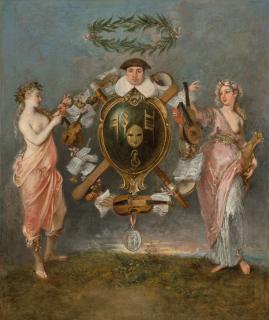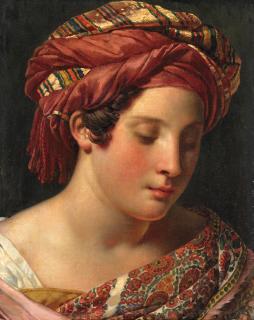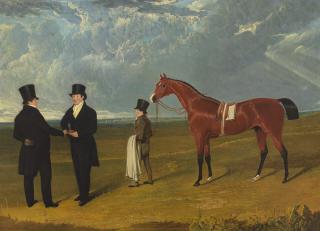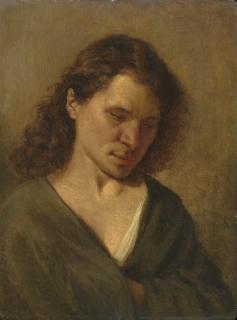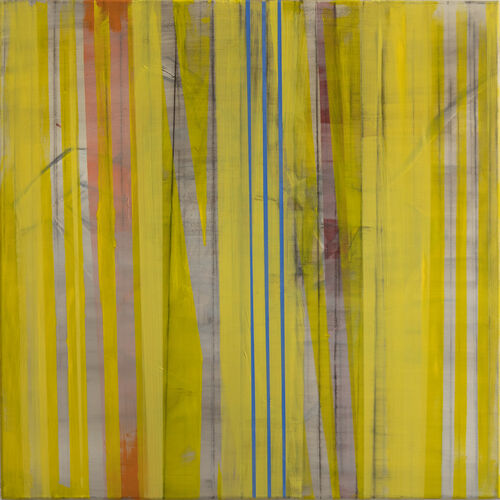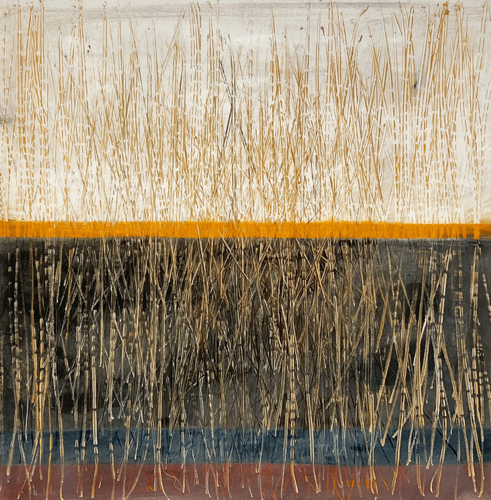- Art.Salon
- Artists
- Gustave Doré
- La bonne aventure au Sacro-Monte
Gustave Doré
La bonne aventure au Sacro-Monte
Estimate: 40.000 - 60.000 EUR
Price realised: 50.400 EUR
Price realised: 50.400 EUR
Description
GUSTAVE DORÉ (1832-1883), FORTUNE-TELLING AT SACRO-MONTE, OIL ON CANVAS, UNLINED, SIGNED
‘For a long time my old friend Doré had been telling me about his desire to see Spain' (C. Davilliers, L'Espagne, Paris, 1874, p. 1). This opening remark by Baron Davilliers (1823-1883) introduces the account of a trip to the Iberian Peninsula undertaken by Gustave Doré (1882-1883) and his long-time friend in 1861. This trip was an opportunity for the artist to combine the exoticism of Hispanic culture, in vogue until the mid-nineteenth century, with his dreamlike style. The sketches collected on this occasion were preliminary sketches for the illustrations for Don Quixote, published shortly after their return to France. Capturing the different cultural aspects he observed, Gustave Doré reworked his illustrations on his return to Paris (Doré. L'imaginaire au pouvoir, [cat. exp.], Paris ; Montréal, 2014, p. 129).
La bonne aventure au Sacro-Monte was inspired by brief sojourn in Granada, in the Sacromonte district overlooking the city, where the two travellers discovered the local gypsy community. This episode enabled the artist to illustrate the customs and troglodyte dwellings of the Spanish gypsies, drawing on the fantastical representations that were so dear to him. In this composition, Gustave Doré seems to pause time through his use of light, each character appears frozen in the half-light, suspended by the quasi-magnetic revelation of the soothsayer. The painter also reinforces the cultural opposition between the city's communities through the use of bright reds and light tones that emphasise the rags worn by the gypsies, while the city's señoras are draped in heavy, dark lace dresses. The painter seems to have reworked this subject several times on his return, as evidenced by several drawings each with slightly different compositions. One sketch, dated 1865, depicts the central part of the present painting (Doré. L'imaginaire au pouvoir, [cat. exp.], Paris ; Montréal, 2014, p. 125, fig. 107). Our work can be compared with a drawing of similar composition, engraved by Fournier for the serial published in 1864 (E. Charton, Le tour du monde. Nouveau journal des voyages, Paris-Londres-Leipzig, 1864, p. 407) and reproduced in the 1874 work (C. Davilliers, 1874, op. cit., p. 213).
We would like to thank Dan Malan, expert in Gustave Doré, for his assistance.
‘For a long time my old friend Doré had been telling me about his desire to see Spain' (C. Davilliers, L'Espagne, Paris, 1874, p. 1). This opening remark by Baron Davilliers (1823-1883) introduces the account of a trip to the Iberian Peninsula undertaken by Gustave Doré (1882-1883) and his long-time friend in 1861. This trip was an opportunity for the artist to combine the exoticism of Hispanic culture, in vogue until the mid-nineteenth century, with his dreamlike style. The sketches collected on this occasion were preliminary sketches for the illustrations for Don Quixote, published shortly after their return to France. Capturing the different cultural aspects he observed, Gustave Doré reworked his illustrations on his return to Paris (Doré. L'imaginaire au pouvoir, [cat. exp.], Paris ; Montréal, 2014, p. 129).
La bonne aventure au Sacro-Monte was inspired by brief sojourn in Granada, in the Sacromonte district overlooking the city, where the two travellers discovered the local gypsy community. This episode enabled the artist to illustrate the customs and troglodyte dwellings of the Spanish gypsies, drawing on the fantastical representations that were so dear to him. In this composition, Gustave Doré seems to pause time through his use of light, each character appears frozen in the half-light, suspended by the quasi-magnetic revelation of the soothsayer. The painter also reinforces the cultural opposition between the city's communities through the use of bright reds and light tones that emphasise the rags worn by the gypsies, while the city's señoras are draped in heavy, dark lace dresses. The painter seems to have reworked this subject several times on his return, as evidenced by several drawings each with slightly different compositions. One sketch, dated 1865, depicts the central part of the present painting (Doré. L'imaginaire au pouvoir, [cat. exp.], Paris ; Montréal, 2014, p. 125, fig. 107). Our work can be compared with a drawing of similar composition, engraved by Fournier for the serial published in 1864 (E. Charton, Le tour du monde. Nouveau journal des voyages, Paris-Londres-Leipzig, 1864, p. 407) and reproduced in the 1874 work (C. Davilliers, 1874, op. cit., p. 213).
We would like to thank Dan Malan, expert in Gustave Doré, for his assistance.















